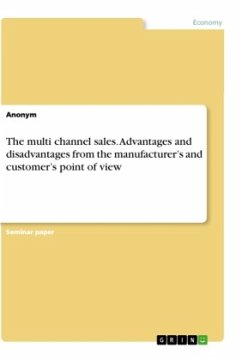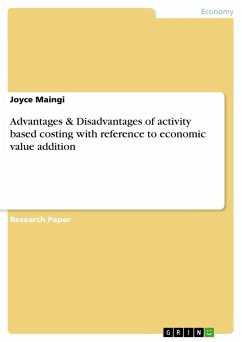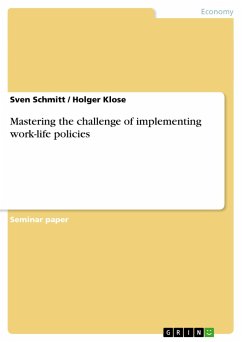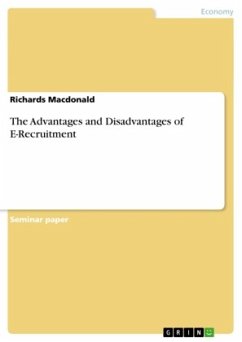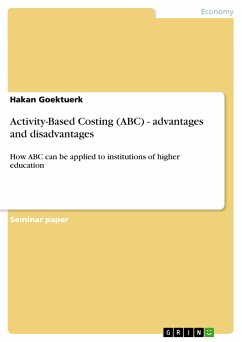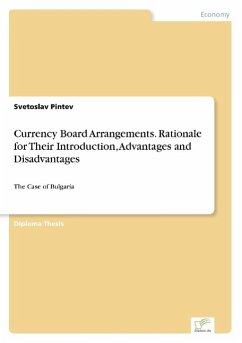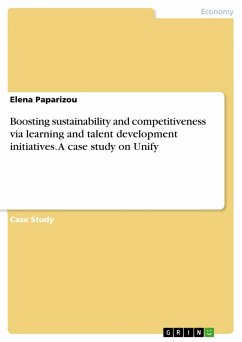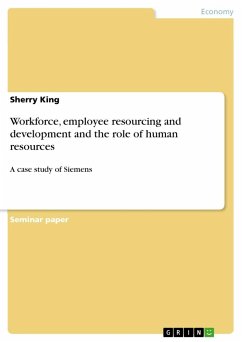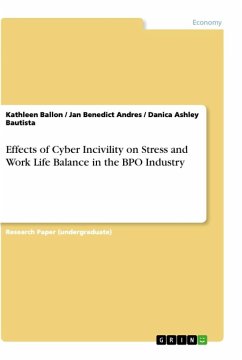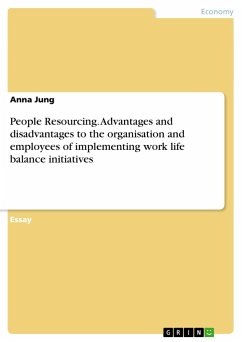
People Resourcing. Advantages and disadvantages to the organisation and employees of implementing work life balance initiatives
Versandkostenfrei!
Versandfertig in 1-2 Wochen
18,95 €
inkl. MwSt.

PAYBACK Punkte
0 °P sammeln!
Essay from the year 2013 in the subject Leadership and Human Resource Management - Miscellaneous, grade: 76, University of Hertfordshire, course: People Resourcing, language: English, abstract: Achieving the right balance between working and non-working life is a continuing challenge for many employees, particularly for British men who are working the longest hours in the EU countries (Green, 2013). According to the Work-Life Balance Employee Survey (Tipping et al., 2012:92) 54 per cent of employees overall agreed or strongly agreed with the statement that "It's the employer's responsibility t...
Essay from the year 2013 in the subject Leadership and Human Resource Management - Miscellaneous, grade: 76, University of Hertfordshire, course: People Resourcing, language: English, abstract: Achieving the right balance between working and non-working life is a continuing challenge for many employees, particularly for British men who are working the longest hours in the EU countries (Green, 2013). According to the Work-Life Balance Employee Survey (Tipping et al., 2012:92) 54 per cent of employees overall agreed or strongly agreed with the statement that "It's the employer's responsibility to help people balance their work with other aspects of their life". Even if 57 per cent of Britain's workforce are satisfied with their work-life balance (WLB) (CIPD, 2013), only 37 per cent report that their organisation provides support to manage their work-home interface (CIPD, 2012). However, in recent years WLB has become a dominant aspect for the vast majority of employers (Straub, 2007). Three-quarters of public organisations provide WLB policies and practices (Visser & Williams, 2006). Nevertheless, whether the underlying motivation behind this increasing activity is to fulfil their operational and organisational requirements or truly to satisfy the employees' needs is arguable. Key factors driving this development are, in particular, demographic and social change, which have led to a greater participation of women in the workforce and increased employee concern with a better balance between work and home life (Major, 2006; Taylor, 2010). With this, a greater demand for atypical work arrangements has emerged. Furthermore, advances in technology enable to work at any time and any place which thus could contribute to a better integration of employees work and home activities.Still, there is some disagreement among HR academics and practitioners about the benefits and challenges regarding this concept. The objective of this essay is to critically review the advantages and disadvantages of establishing WLB programmes to both organisations and employees. First of all, in order to set the scene for the examination of the relevance of this notion to both parties, the key term WLB will be defined and current examples of different initiatives offered by employers will be given. After that, benefits and challenges associated with WLB practices will be presented. Two case studies will provide examples of how other organisations have addressed this issue and what the beneficial effects have been. Finally, based on these expositions, the main findings will be summarised and evaluated. [...]



